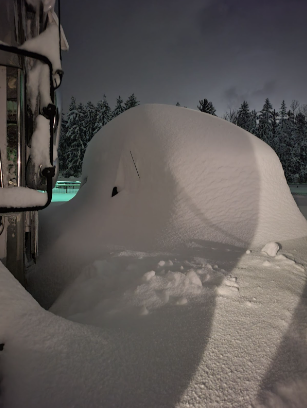Weather and Climate Change: Know the Difference

Image of a snow-buried van in December during the middle of the storm
Historic; once in a lifetime. We are hearing these words spoken more and more often in recent years. They’ve been used to describe weather events across the world, from Pakistan’s ongoing floods which have submerged ⅓ of the country for over 7 months, to Buffalo’s own recent winter storms.
The aforementioned events are both common for their respective areas, Pakistan for flooding and Buffalo for snowfall. However, the severity of these weather events has become more commonplace. “Severe weather hasn’t really impacted me that much, except when we get those occasional big winter storms,” stated Edward Kotlarsz, an OPHS sophomore. “Climate change, however, is actually something that keeps me up at night, since I feel like people don’t really understand how serious it is,” continued Kotlarsz.
While it is easier to link global warming to California Wildfires, it’s more difficult to understand how it impacts our recent snowfall; yet, it is the cause behind both of these phenomena.
Global warming, contrary to its name, isn’t just about warming the planet. Climatologists have come to understand that global warming creates increased variability in weather events. A weather pattern that would normally cause a small amount of snow can now become more extreme. People often use the term “global warming” to describe what is happening to our planet. However, the term “climate change” more accurately describes our reality: an uprising of increasingly extreme weather patterns.
These weather patterns aren’t where the damage ends. “A country in Oceania named Tuvalu will be the first to sink under the sea,” states OPHS student Kyle Hess. While that statement may seem exaggerated, or so unrelated to us that it invokes no feeling, it is infact relevant. The ocean rising, even a centimeter, has huge impacts on our world.
Pakistani superfloods used to occur every 2.6 years. They’re now occurring every year. In 2022 the country received more than 3x the normal amount of rainfall. A record heat wave started this catastrophe. The combination of warm air, which holds more moisture, and significant glacial melting set the stage for this record flooding.
In Western New York, an unseasonably warm fall kept Lake Erie at higher temperatures than normal. As cold air passed over the warm body of water, it gathered heat and a great amount of moisture from the surface which, resulted in our record snowfalls in the November storm. Just one month later, Buffalo experienced another record storm. This time, not only Buffalo, but most of the country was hit by the effects of the tropical storm that turned into a bomb cyclone. This rare event dumped 4 feet of snow and delivered 70 mph winds, crippling the city.
Climate change can be swept under the rug and labeled as just another disaster. But even though the events these terms are correlated with seem unrelated, both in location and outcome, it is likely they are all connected.
Single disasters can seem like they are isolated, or one-time events. But when we look at the record number of disasters around the globe, the most logical conclusion is that they are connected by the dangerous climate change driving our future.









